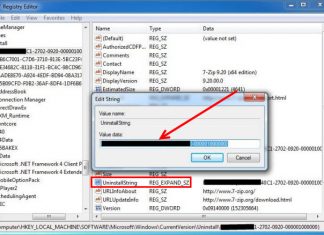The continuing, daily costs of running a firm that isn’t immediately related to the volume of production or particular business activity are referred to as overhead. It is continuous regardless of sales and may significantly affect a company’s breakeven point, profitability, and sustainability.
The amount of overhead is closely correlated with the business’s operational leverage. This refers to the minimum activity level at which a firm may operate before going into the red and the maximum activity level required for a business to achieve break even and begin to turn a profit. Additionally, it establishes how much economies of scale would benefit the company.
What Exactly Are Overhead Costs?

The expenditures involved in running a firm that isn’t related to developing or manufacturing a product or service are known as overhead costs, often known as overhead or operational expenses. They are the costs a company must pay to remain open.
Overhead costs are any expenditures included on a company’s income statement that aren’t directly related to creating, promoting, or dispensing a product or service. Because they are directly associated with the goods produced, meat and butcher’s knives are not considered overhead expenses.
Because the butcher must pay rent whether she is producing goods or not, the rent for the space where she works is an overhead expense. In order not to think about “500 dollar loan bad credit” later, you should always remember about overhead costs, regardless of how successful the business is. After all, you will have to pay it, read below how to calculate such a tax.
Different Overheads

There are three primary categories of expenses that companies face. Depending on the kind of company and the sector it serves, different overhead costs apply.
Fixed Expenses
Costs known as “fixed overheads” are expenses that don’t fluctuate based on the amount of company activity. Salaries, rent, property taxes, asset depreciation, and licensing fees are a few examples of fixed overheads.
Variable Costs
Variable overheads are costs that change with the degree of company activity and might rise or fall with various activity levels. When company activity is strong, expenditures will rise, but when business activity is low, overheads will significantly decrease or even disappear.
Overheads That Are Sporadic
Some of the traits of both fixed and variable expenses may be found in semi-variable overheads. While the precise cost may vary based on the degree of commercial activity, a company may incur such expenditures at any moment. A semi-variable overhead may have a basic cost that the business must pay regardless of activity level and a variable cost that is based on consumption.
What Does an Overhead Cost Look Like?

Even if overhead expenses are not directly related to producing a profit, they are nonetheless important since they provide the actions that lead to a profit vital support. The kind of company will determine the overhead expenses. The overhead expenses of a merchant will be quite different from those of a freelancer, for instance.
Overhead expenses include, for instance:
- Rent
- Office equipment
- Travel
- Advertisement costs
- Insurance
- Financial and legal costs
- Government licenses and fees
- Wages and salaries
- Tax on real estate
- Depreciation
Expenses that repeat on a regular basis but are difficult to predict include rent, salaries, and insurance. Variable overhead costs include advertising expenditures, which may change from month to month depending on the volume of business.
These expenditures are also broken down by some firms into selling, administrative, and manufacturing overhead costs. Manufacturing overhead is made up of all expenses a manufacturing plant faces apart from direct expenditures, while administrative overhead comprises front office costs and sales expenses.
The costs involved in providing products and services, such as direct labor and materials, are not included in overhead costs.
To determine the long-term pricing for products and services, businesses must include both overhead costs and direct expenditures. By doing this, the company is able to generate profits over the long run.
How To Determine The Overhead Rate

The ratio of your overhead expenses to your revenue is known as your overhead rate. For instance, if your overhead rate is 13%, you would spend $0.13 in overhead for each $1 your organization makes.
The Overhead Rate Formula
Fortunately, it’s rather easy to determine the overhead rate. This equation addresses it:
Overhead Cost / Sales = Overhead Rate
You must utilize numbers from a single period, such as one month, for the formula to function.
The following computation is obtained if monthly sales are $15,000 and overhead costs are $2,000:
2,000 / 15,000 = 0.133
Your overhead rate is 13.3%, or around 13 cents for every dollar made, in overhead costs.
The Value of Overhead Expenses

Any organization’s overall expenditures and expenses must include overhead charges. The cost of service is relatively expensive, particularly in service-based organizations when manufacturing is still absent.
As is common knowledge, overhead expenses have a positive impact on all cost drivers even if they can’t always be attributed to specific goods, services, or divisions.
Making sure your firm is successful and obtaining the highest margins on your sales will depend on your ability to understand and manage your overhead, especially as it pertains to your business output.
In 2023, UPS Supply Chain Logistics generated $7 billion in net revenue in North America and became the first logistics company to generate that amount of revenue. And once, more than 100 years ago, 2 teenagers (in the future, the founders of this company) took 100 dollars to the court and opened mail delivery. Over time the company grew and so did the profits, these days they make sure to pay attention to overheads. And as you can see from the statistics, this gives its results.
Allocation of Administrative Fees

It involves two steps:
● Choosing a Probable Cost Center
It entails analyzing the overhead in order to choose the right cost center. It will rely on a number of variables, including the necessary degree of control and the information at hand.
● Determination
This step incorporates cost allocation and cost apportionment as well as analysis to discover the overhead costs that may be attributed to each cost center. By locating a cost that is explicitly linked to a certain cost Center, cost allocation is accomplished. When doing the same is not practicable, cost centers are assigned costs depending on the anticipated benefits that each cost center will get. For instance, it is hard to divide power costs among the divisions of a service organization; as a result, the cost is divided among the divisions based on estimates.
Conclusion
The expenditures of operating a firm that isn’t directly connected to providing an item or service are referred to as overhead. These expenses might be either permanent, like rent, or variable, like transportation expenditures. Additionally, they may be semi-variable, like utilities. By efficiently controlling your overhead, you may maintain low pricing, maintain low expenses, and generate the maximum money possible.



















